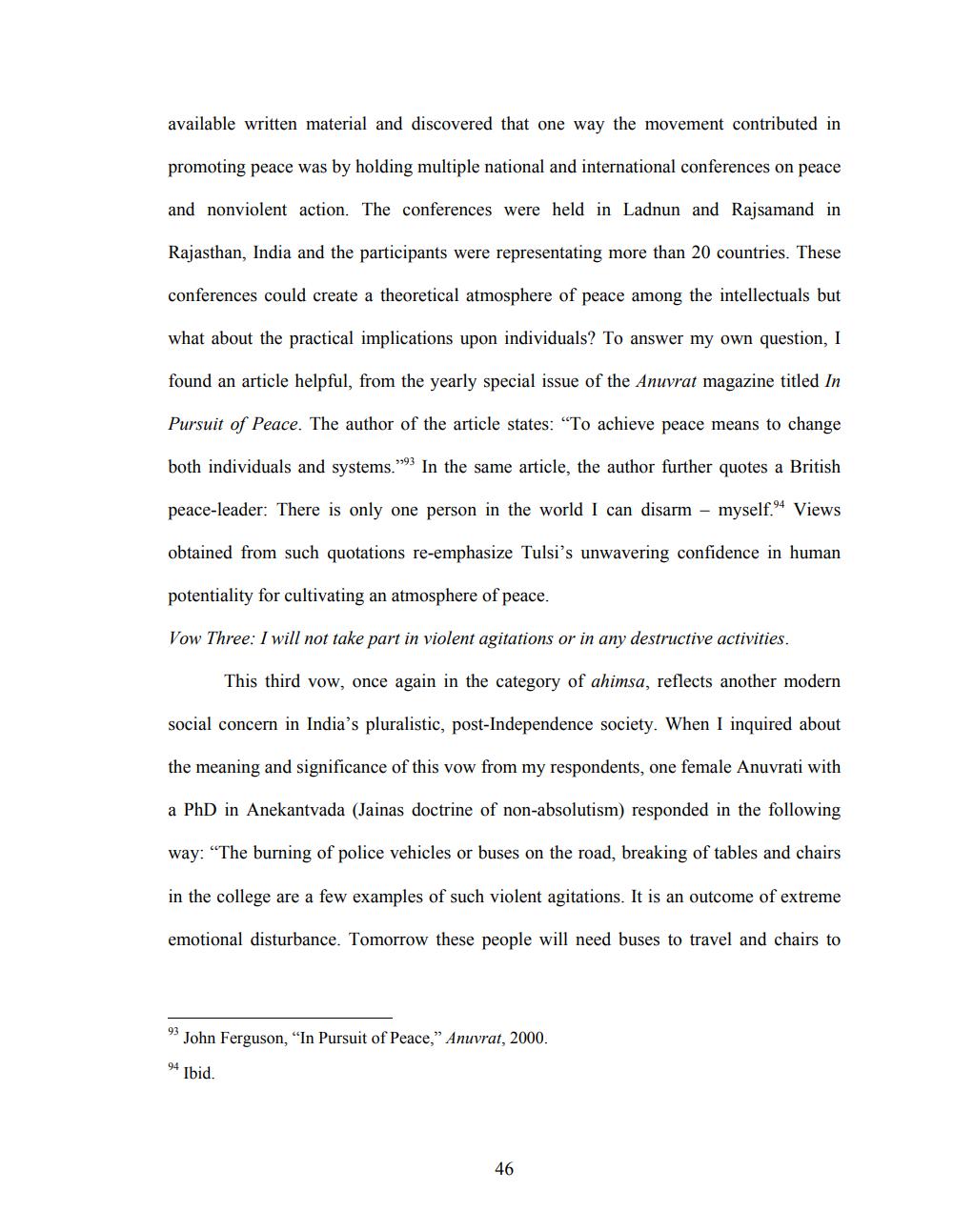________________
available written material and discovered that one way the movement contributed in
promoting peace was by holding multiple national and international conferences on peace
and nonviolent action. The conferences were held in Ladnun and Rajsamand in
Rajasthan, India and the participants were representating more than 20 countries. These
conferences could create a theoretical atmosphere of peace among the intellectuals but
what about the practical implications upon individuals? To answer my own question, I
found an article helpful, from the yearly special issue of the Anuvrat magazine titled In
Pursuit of Peace. The author of the article states: "To achieve peace means to change
both individuals and systems."93 In the same article, the author further quotes a British
peace-leader: There is only one person in the world I can disarm - myself.94 Views
obtained from such quotations re-emphasize Tulsi's unwavering confidence in human
potentiality for cultivating an atmosphere of peace.
Vow Three: I will not take part in violent agitations or in any destructive activities.
This third vow, once again in the category of ahimsa, reflects another modern
social concern in India's pluralistic, post-Independence society. When I inquired about
the meaning and significance of this vow from my respondents, one female Anuvrati with
a PhD in Anekantvada (Jainas doctrine of non-absolutism) responded in the following
way: "The burning of police vehicles or buses on the road, breaking of tables and chairs
in the college are a few examples of such violent agitations. It is an outcome of extreme
emotional disturbance. Tomorrow these people will need buses to travel and chairs to
John Ferguson, "In Pursuit of Peace," Anuvrat, 2000.
94 Ibid.
46




